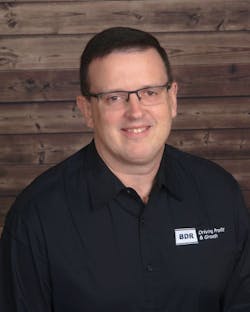John Michel, a training coach with Business Development Resources, wants to emphasize the fact that HVAC, plumbing and electrical businesses are among the most process-intensive home service businesses you will find.
“HVAC service, plumbing and electrical are all about having a process for each step of the technician’s day,” Michel says.
Which processes do you have in place, if any? If you have none or a few, you must work to establish more processes for 2022.
“Process development begins before the year begins, by crafting a solid and structured business plan for the coming year,” Michel says. "It’s very important to have a budget that contains realistic projections for revenue, average ticket, and number of active and expected new maintenance agreements for the coming year, so you can build a solid plan for your company, with an applicable number of service technicians and installers, and a plan for appropriate staffing.”
Which processes do you have in place, if any? If you have none or very few, you must work to establish more processes for 2022.
STAFFING: “Sufficient staffing is a major challenge for the HVAC industry and other industries today. Insufficient staffing creates many efficiencies. Be certain, going into the year, that you have a solid business plan, to include all departments that will require staffing, and what areas need to be work on for correct processes and procedures, to set up for a solid year.
“Your staff includes technicians, installers, salespeople and inside support – customer service and dispatchers -- who are in place to secure the customer and set the field staff up for success. They are absolutely essential frontline contacts."
DISPATCHING: “Are dispatchers routing service calls as efficiently as possible? For installations, are they obtaining the materials installers and technicians will need? The appropriate staffing of the dispatch group and the customer service team, depending on the size of your company, is crucial,” Michel said.
TRAINING: “If the customer is asking about devices or products that can keep their indoor air quality home environment safer and healthier, contractors need to have training programs around that topic for technicians, installers and salespeople, that will help them communicate more effectively with the homeowner about products that can make them healthier and attack viruses. Those products are out there, and I’ve seen technicians and installers who are really able to help [counsel the customer on the applicability to their situation].”
Problem: Depending on the size and experience of the company, it has become very difficult to find skilled and experienced technicians and installers.
“Therefore, you must be looking at your training, and find ways to createSALES: This is where a sales “cadence” comes into play. The cadence is a regular pattern of activity that is proven to be effective in keeping the team on track.
“If the customer is not ready to make a decision, having a sales cadence process is powerful,” Michel says. “If they’re not ready, talk to them about when they may make a decision, and schedule a series of follow-ups, according to their preferred method of communication. I think we’re seeing a trend with multi-generations; some may prefer a text follow-up, some phone, some email. Having that process written out in a manual can have significant impact on close rates, monthly sales, profitability, and commissions.”
The cadence is the flow of the communication: “On Day 1 I do this. On Day 2 I do this…” Ideally, there is a series of steps the salesperson follows.
INSTALLATION: During the installation process, every couple of minutes represents a significant amount of money, so you need to be as efficient as you can. And the transfer of information from salesperson to technician must be well-documented. Oftentimes the salesperson is no longer involved after the sale. But has the salesperson given information about the customer and the home? Are there specific instructions or home surroundings they need to know about? Are there any photographs of the home? Photographs of any pets?
Salespersons should take photos of the unit that’s coming out and the replacement unit. This will help them think about the project in advance, and ensure the parts are ready in advance.
AFTER THE SALE: We always suggest the salesperson has a follow-up process with the homeowner after the installation, to close the loop, and do what you would said we would do as part of the process. We are being the kind of contractor we want to be. They customer signs up for a maintenance program and they’re customers for life if we do all we said we would do. That includes the follow up after the job is complete, getting them on a maintenance program, and ensuring the warranties are in place. Continue to grow the business through customer referrals, because our processes are sound strong and efficient.
About the Author
Terry McIver
Content Director - CB
As director of content for Contracting Business, he produces daily content and feature articles for CB's 38,000 print subscribers and many more Internet visitors. He has written hundreds, if not two or three, pieces of news, features and contractor profile articles for CB's audience of quality HVACR contractors. He can also be found covering HVACR industry events or visiting with manufacturers and contractors. He also has significant experience in trade show planning.


